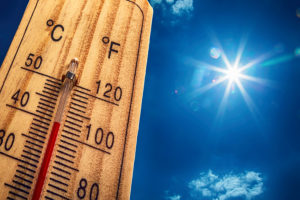FEMA Shares 7 Steps to Prepare Your Home for Summer
go.ncsu.edu/readext?529460
en Español / em Português
El inglés es el idioma de control de esta página. En la medida en que haya algún conflicto entre la traducción al inglés y la traducción, el inglés prevalece.
Al hacer clic en el enlace de traducción se activa un servicio de traducción gratuito para convertir la página al español. Al igual que con cualquier traducción por Internet, la conversión no es sensible al contexto y puede que no traduzca el texto en su significado original. NC State Extension no garantiza la exactitud del texto traducido. Por favor, tenga en cuenta que algunas aplicaciones y/o servicios pueden no funcionar como se espera cuando se traducen.
Português
Inglês é o idioma de controle desta página. Na medida que haja algum conflito entre o texto original em Inglês e a tradução, o Inglês prevalece.
Ao clicar no link de tradução, um serviço gratuito de tradução será ativado para converter a página para o Português. Como em qualquer tradução pela internet, a conversão não é sensivel ao contexto e pode não ocorrer a tradução para o significado orginal. O serviço de Extensão da Carolina do Norte (NC State Extension) não garante a exatidão do texto traduzido. Por favor, observe que algumas funções ou serviços podem não funcionar como esperado após a tradução.
English
English is the controlling language of this page. To the extent there is any conflict between the English text and the translation, English controls.
Clicking on the translation link activates a free translation service to convert the page to Spanish. As with any Internet translation, the conversion is not context-sensitive and may not translate the text to its original meaning. NC State Extension does not guarantee the accuracy of the translated text. Please note that some applications and/or services may not function as expected when translated.
Collapse ▲In the latest Individual and Community Preparedness eBrief, FEMA shares 7 steps to get your home ready for summer and the warm weather that accompanies this season. Read on to see FEMA’s message:
Extreme heat may affect your health or the health of those around you. Learn ways to reduce the heat in your home. The Ready Campaign recommends the following measures to keep your home cool this summer:
- Check to see if your home’s cooling system is working properly.
- Make sure your home is well insulated and that you have weather stripping
 around your doors and window sills to keep the cool air inside.
around your doors and window sills to keep the cool air inside. - Install window air conditioners snugly; insulate if necessary.
- Check air-conditioning ducts for proper insulation.
- Install temporary window reflectors (for use between windows and drapes), such as aluminum foil-covered cardboard, to reflect heat back outside.
- Cover windows that receive morning or afternoon sun with drapes, shades, awnings, or louvers. Outdoor awnings or louvers can reduce the heat that enters a home by up to 80 percent.
- Keep storm windows up all year.
Source: Individual and Community Preparedness eBrief, May 24, 2018.


